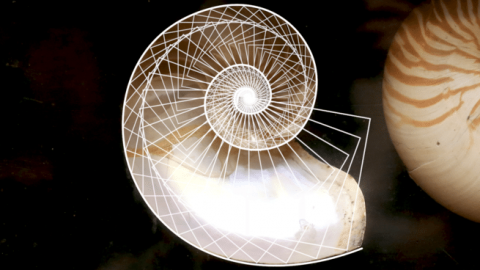
Nautilus's Impressive Memory
The nautilus’s impressive memory has survived five mass extinctions!
Number 51 loves frozen shrimp. The nautilus’ keepers, Brooklyn College professor Jennifer Basil and Ph.D. student Naomi Lewandowski, buy the marine meal from the Target across the street. They keep it frozen, and on a recent visit to the lab, Lewandowski lopped out a few pieces on a paper party plate for an impromptu afternoon feeding.
Along with a half-dozen other deep sea specimens, Number 51 spends her days in a cylindrical black tank, swimming, slowly and backward using jet propulsion, like a helicopter taking off tail-first. Sometimes, Lewandowski pulls the shelled cephalopods from their dark, watery shelter for a photoshoot. More often, these darkness-loving creatures are exposed to the artificial lights of the lab for an experiment or two—designed to test the memory, mating behaviors, and other secret skills of the nautilus.
Whether they reside in a research tank, or in the nautilus’s natural habitat about 1,500 feet under the ocean’s rippled surface, the species has an unnervingly ancient appearance. Number 51’s eyes are white, with a small black dot in the center, and no lens, like a pinhole camera. Her features seem strangely mishmashed—an evolutionary outlier like the platypus. Seeing a nautilus for the first time, one would be forgiven for asking if it’s a crab (there’s that stunning shell) or an octopus (its tentacles whir in the presence of food). Given the species has appeared in the fossil record for 500 million years with few visible changes—at least to the untrained eye—you may even be forgiven for asking if it’s a dinosaur, or one of those so-called living fossils.
